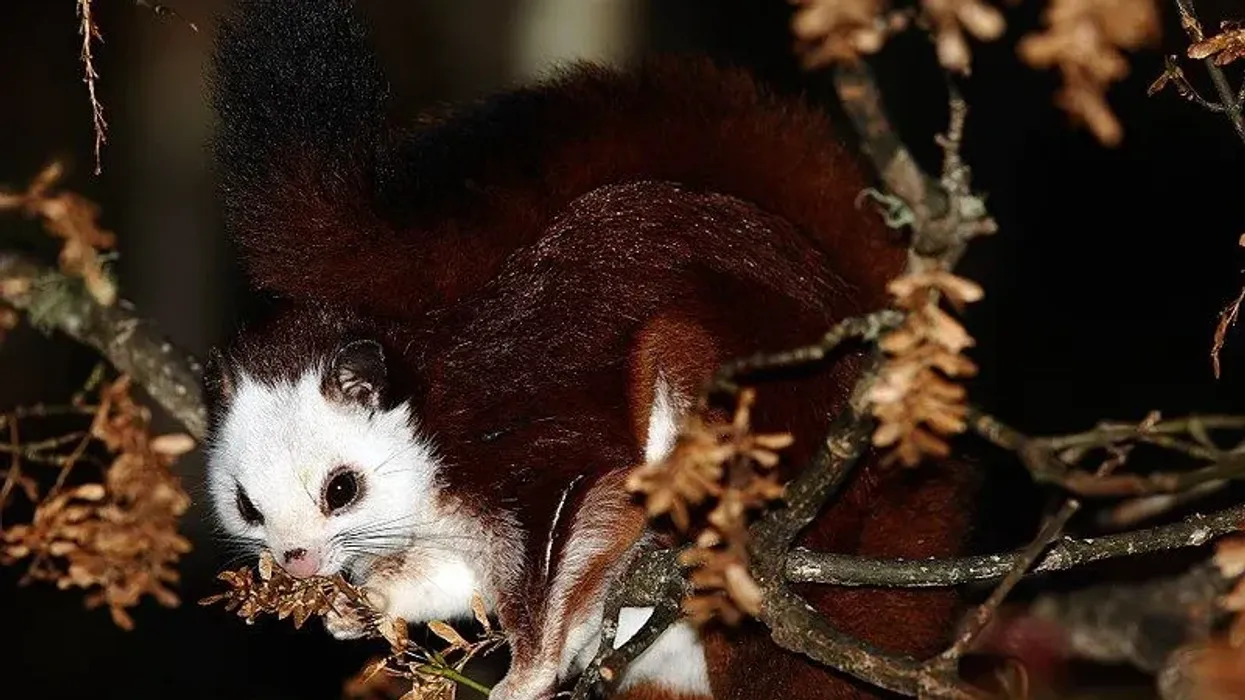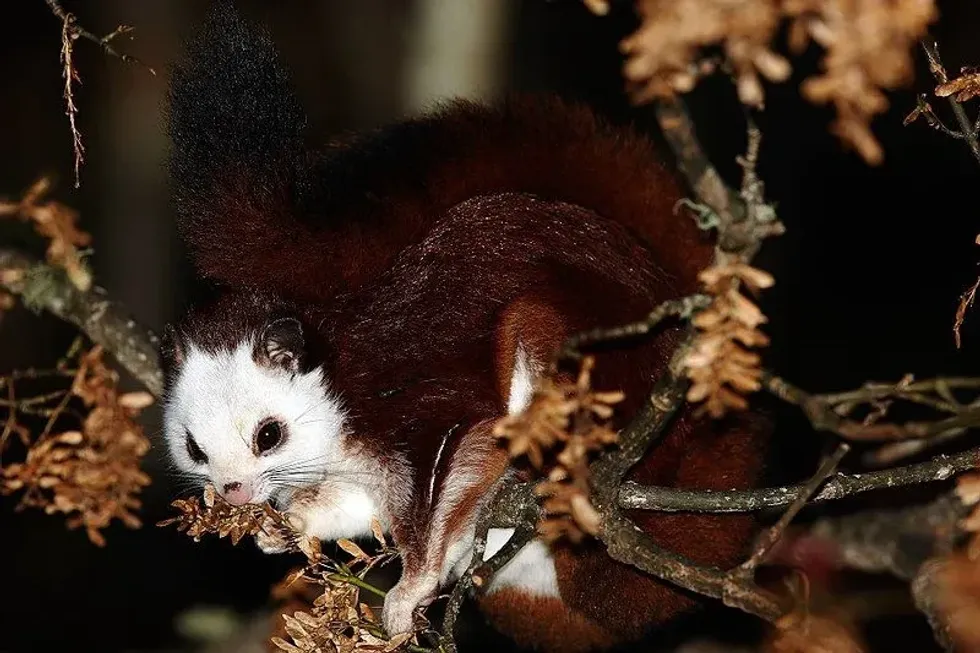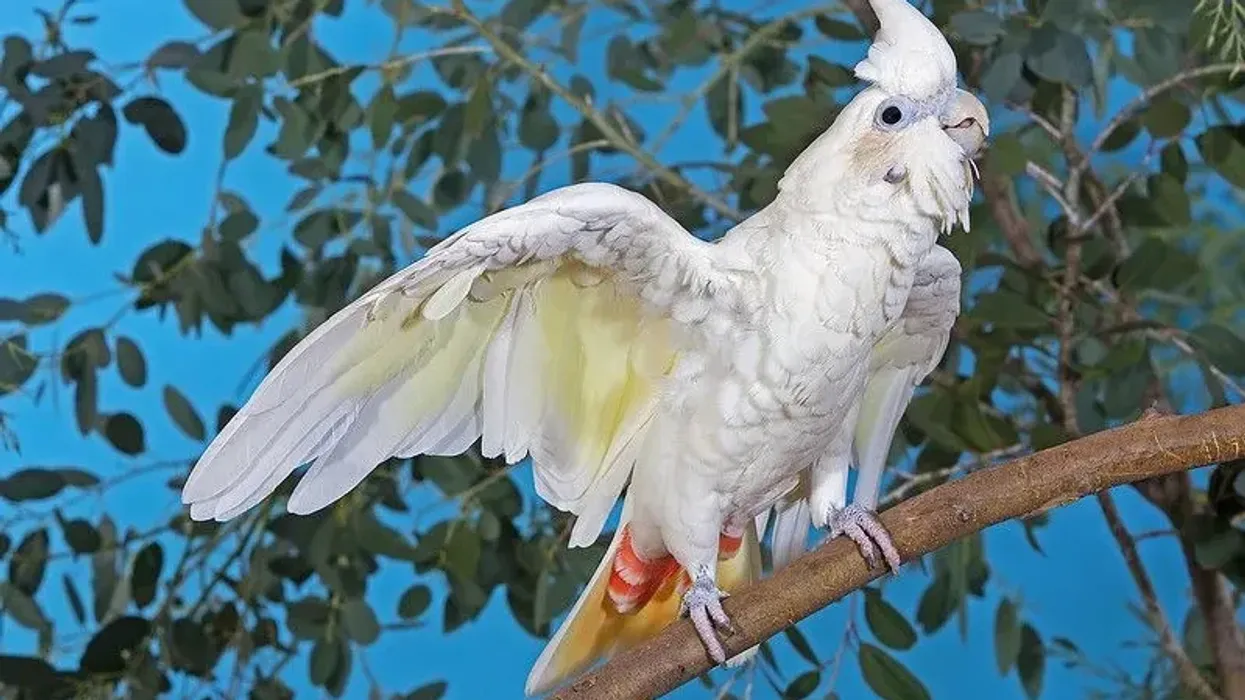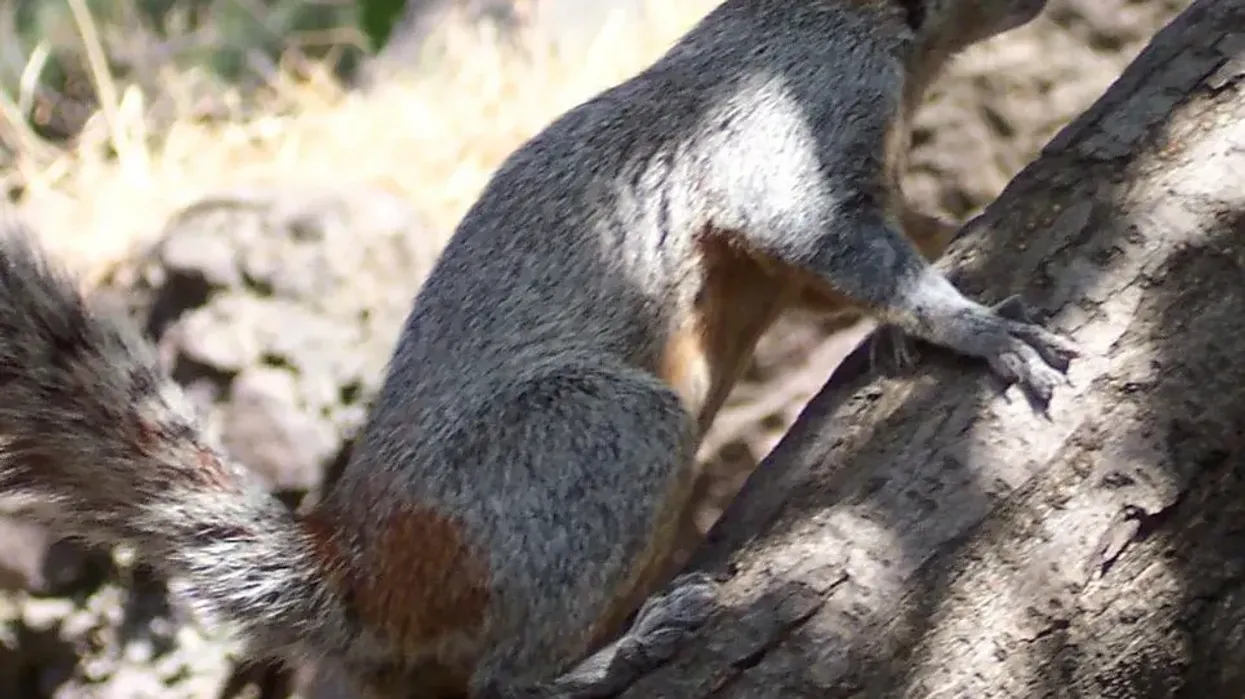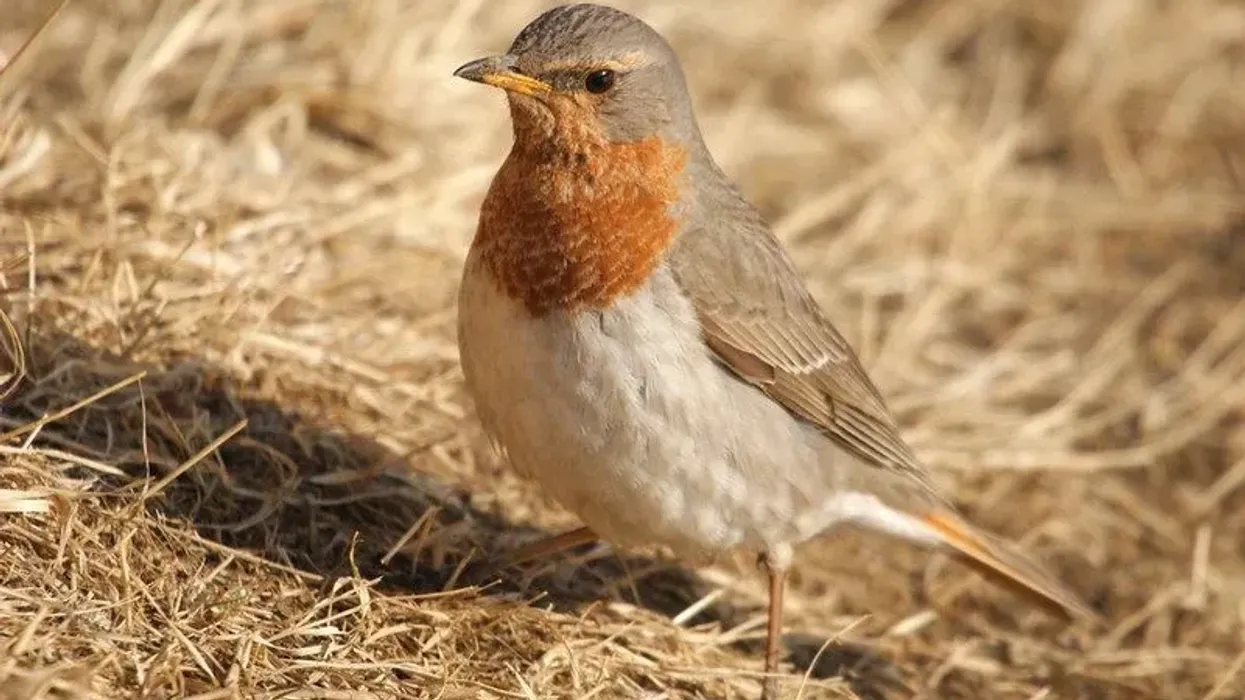The red and white giant flying squirrel (Petaurista alborufus) are of the Sciuridae family and are a rodent species. They are found in different parts of China. They reach up to an elevation of 3000 ft.
These species of giant flying squirrels in Taiwan are named Taiwan giant flying squirrels (P. Lena). Some subspecies groups related to this genus are the P. a. leucocephalus, P. alborufus, P. a. ochraspis, P. a. castaneus, and P. a. Lena.
They have a combination of red, orange, white, and straw-colored body. These species are nocturnal so, they escape predation from hawks and eagles. Although, they face do threats from owls.
These squirrels are hunted by humans for food. The weight of this squirrel species is not clearly defined.
Research states that their weight ranges around 1000 g. They glide with a membrane called a patagium. The status of these species is unclear in other countries. They are mostly and widely spread across the northern Mainland, Southeast Asia, and north-eastern South Asia.
You may also like to learn about flying squirrel and Japanese giant flying squirrel facts if you enjoy these facts about red and white giant flying squirrels.
Red And White Giant Flying Squirrel Interesting Facts
What type of animal is a Red and White Giant Flying Squirrel?
This species of giant flying squirrel (Petaurista alborufus) is active at night looking for food and also foraging. They belong to the Rodentia order. These Petaurista genus species sleep in hollow branches and trees of forests during the day.
What class of animal does a Red and White Giant Flying Squirrel belong to?
These species of flying squirrels belong to the Mammalia class of animals.
How many Red and White Giant Flying Squirrels are there in the world?
The exact number of the population of these species of flying squirrels is unknown.
Where does a Red and White Giant Flying Squirrel live?
These species of flying squirrels occupy Mainland China and Taiwan. They inhabit Gansu, Shaanxi, west Sichuan, Hunan, and many more forests of Southern China.
The subspecies P. a. leucocephalus lives in Northern Myanmar, Bhutan, and India. They can also be found in a wide range across northern Mainland, Southeast Asia, and northeastern South Asia. The red giant flying squirrel is a subspecies found in Northern Thailand and Myanmar.
What is a Red and White Giant Flying Squirrel's habitat?
These species of flying squirrels are found at a range of 800-3,500 m elevation. The maximum elevation is about 2,000-3,000 m. They are mainly found in coniferous forests, limestone cliffs, and dense montane forests. They den mostly in rock crevices, cavities of trees, and cave ledges in the forests.
Who do Red and White Giant Flying Squirrels live with?
These flying squirrels live alone or in a social group. The behavior of these squirrels is mostly peaceful within groups of their kind. Their behavior is generally territorial, and during the breeding season, they become more territorial.
How long does a Red and White Giant Flying Squirrel live?
These flying squirrels live up to 16 years in captivity. The data on their lifespan in the wild is unknown.
How do they reproduce?
These animals have one mate at a time. They reach sexual maturity at about two years. The males compete from winter to early summer for females. They have two mating seasons, winter and summer.
There is only limited information available about the reproduction of these flying squirrels. The females produce about two or three young squirrels per breeding season. The young ones stay with the female until they reach sexual maturity. The young ones of these animals leave the nest in 59 or more days.
What is their conservation status?
The conservation status of the population of these flying squirrels is listed as in the Least Concern category. The main threats they face are deforestation and loss of habitat.
Red And White Giant Flying Squirrel Fun Facts
What do Red and White Giant Flying Squirrels look like?

* Please note that this is an image of a red giant flying squirrel. If you have an image of a Red and white giant flying squirrel please let us know at hello@kidadl.com.
The length of the tail of these squirrels is the same or more than its body length. They can grow up to one meter. The weight range is around one kilogram.
There is not enough data about the exact weight of these animals. They have straw-colored or large buff patches on the lower back with red upper parts. They have orange-brown under parts. They have blue-colored eyes with rufescent around their eyes.
They have reddish or blackish feet. Two-thirds of the tail is russet or black-colored with a ring of whitish-brown or orange color at its base. The patagia on the side of these species are square-shaped.
How cute are they?
This species is fairly cute as they are fluffy and have long bushy tails. They are not small though as they are giant flying squirrels.
How do they communicate?
These animals communicate through touch, smell, and chemical release.
How big is a Red and White Giant Flying Squirrel?
The red and white giant flying squirrel size range is between 14-23 in (35-58 cm ), head to body length. The length of their tail is 16.9-24.2 in (43-61.5 cm).
How fast can a Red and White Giant Flying Squirrel move?
The giant red and white flying squirrel has a high gliding speed. The exact data on its gliding is unavailable. These giant flying squirrels, like other flying squirrels, glide to up to 1,300 ft (400 m). They mostly take smaller glides as it is more efficient and they can reach more trees.
How much does a Red and White Giant Flying Squirrel weigh?
The weight is calculated to be 1.9-4.2 lb (0.8-1.9 kg). There is only little data available on the weight of these animals.
What are their male and female names of the species?
There is no specific name given to females or males.
What would you call a baby Red and White Giant Flying Squirrel?
There is no specific name given to a baby these giant flying squirrels. They are often referred to as juveniles or young ones.
What do they eat?
The diet of these species includes leaves, grains, nuts, roots, wood, bark, flowers, fruits, woody plant parts, insects, leafy vegetation, insects, and seeds. They also like to eat bulbs, bark, roots, eggs, and other small animals.
Are they dangerous?
No. They tend to bite only when triggered, provoked, or while feeding.
Would they make a good pet?
No. They would not make a good pet. Even after their rescue, it is advised to send them back to the forests. They prefer trees to human settlements.
Did you know...
The flying squirrels can glow at night.
The highest weight recorded of any flying mammal was a red and white flying squirrel weighing 9.5 lb (4290 g).
A few predators of these animals are tree snakes, raccoons, coyotes, and cats.
The answers to the evolution of these flying squirrels were found recently. The studies proved that these animals are monophyletic, and originated about 20 million years ago, and are also related to tree squirrels.
Some of the rescued population of this species is domesticated as house pets. This red and white giant flying squirrel pet is called 'a pocket pet.'
Gliding is way more efficient for these animals than climbing down or up a tree.
Only two species of flying squirrels are found in America - the Northern flying squirrel and the Southern flying squirrel.
The flying squirrels can glide across five football fields.
The word patagium is a derivation of the Greek word patageion meaning 'the gold lining at the edge of a women's tunic.'
Do Red and White Giant Flying Squirrels bite?
Yes. These animals only bite when they are threatened or provoked. Also, while feeding, they are unable to differentiate between the food and your hand.
It is always advised not to feed these wild species. Any squirrel's bite can transfer diseases such as Rabies, Lyme disease, Salmonella, Tularemia, and Leptospirosis. Skin rashes or ulcers, headache, fatigue, vomiting, and fever are among the symptoms you may experience. The chance of humans contracting rabies is low.
It is also easy to identify whether or not the squirrel has rabies. You can treat squirrel bites at home. If the wound seems too serious, then it is advised to visit the emergency clinic.
Comparisons with other Giant Flying Squirrels
Some other species of giant flying squirrels are the Japanese giant flying squirrel, Spotted giant flying squirrel, Hodgson's giant flying squirrel, Bhutan giant flying squirrel, and Red giant flying squirrel. The population of these animals, which is found in Taiwan, is regarded as a separate species and are named Taiwan giant flying squirrel (P. Lena)
The Bhutan, Woolly, and Red giant flying squirrels are the subspecies of these animals and have almost the same length and weight.
The Indian giant flying squirrel weighs less than the red and white flying squirrel.
The red and white giant flying squirrels are bigger and heavier than the Japanese dwarf flying squirrel. This makes them the largest among the flying squirrels.
The species of Kashmir flying squirrels, unlike the red and white giant flying squirrels, are Threatened.
There have been rare instances when two subspecies use the same tree for foraging.
Here at Kidadl, we have carefully created lots of interesting family-friendly animal facts for everyone to discover! Learn more about some other mammals including the American Marten, or black rat.
You can even occupy yourself at home by drawing one on our Red and white giant flying squirrel coloring pages.

